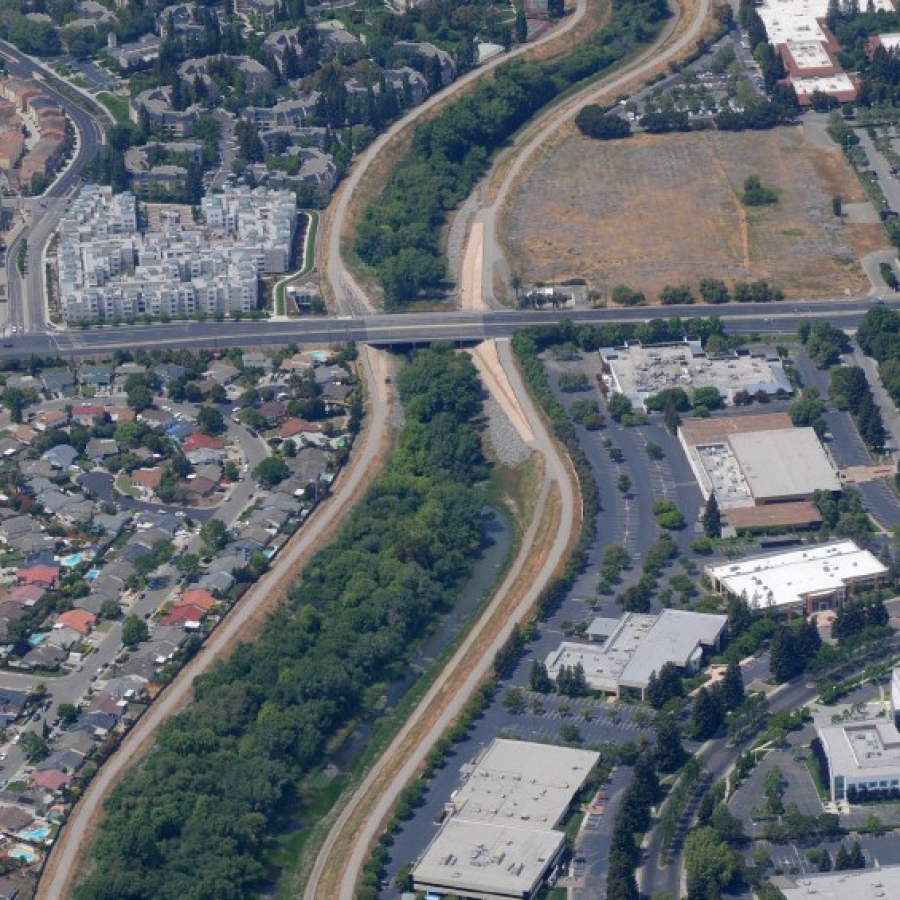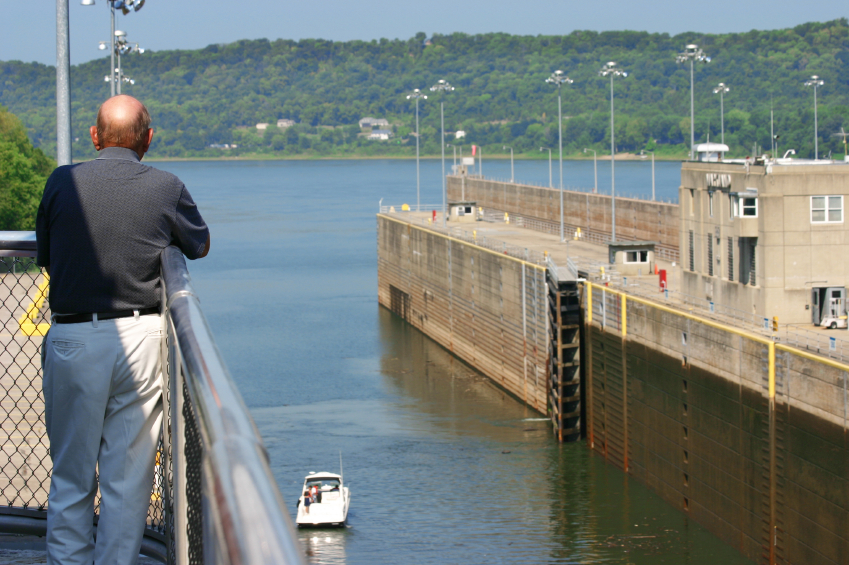U.S. Infrastructure: Stephen Flynn's Edge of Disaster
I just finished reading Stephen Flynn’s 2007 book "The Edge of Disaster: Rebuilding a Resilient Nation." For those who’ve been interested enough in infrastructure topics to find their way to the Operations Channel, I’d highly recommend this book. Flynn is more of a security expert than he is a construction specialist, but it is exactly this objective perspective which makes his focus on our infrastructure so valuable. He includes infrastructure shortfalls along with Jihadists and pandemics as major threats to our society. He sees our aging infrastructure beyond the bricks and mortar, as reducing our national flexibility, as vulnerable terrorist targets, and as economic liabilities for future generations. These add up to make our declining infrastructure a tangible national security issue that he’s rightly concerned about.

ASCE’s Report Card for America’s Infrastructure
Throughout "The Edge of Disaster: Rebuilding a Resilient Nation," Flynn made many memorable statements that captured my attention, including one which parallels my inspiration for writing our infrastructure series lead article, U.S. Infrastructure, Obvious But Unnoticed. Flynn has read and researched the same information from the American Society of Civil Engineers (ASCE) Report Card as we have at Buildipedia.com, and concluded in his book:
“The narrative reads like a survey that might have been conducted on the eve of the collapse of the Roman empire. Roads, dams, water purification facilities, the power grid, canal locks, roads, and wastewater management systems have gone from very bad to worse in the past four years.”
Power Failures Within the Electric Grid
In our recent series on the Electric (Energy) Infrastructure, we highlighted the American public’s largely self-induced struggle between constructing new transmission lines and enduring continued blackouts, as well as the much needed technologies that can better address power outages. Flynn provides several recent real-life examples of dramatic blackouts in the United States. A simple thing like untrimmed tree branches entangled in transmission lines caused the major Northeast blackout many of us remember during a period of high electricity demand on August 14, 2003.
Felled by thunderstorms, tree branches striking transmission lines were again the culprit during a heat wave in the summer of 2006 near Saint Louis, Mo. Over 700,000 homes and businesses were left without power over a span of several days. Both scenarios highlight the lack of grid flexibility and redundancy.
Troubled Levees
Flynn provides an assessment of two troubled infrastructure systems we haven’t yet covered in our series. One is levees, and specifically, the 600-mile network of earth embankments that protect the Sacramento-San Joaquin River Delta and the northern Central Valley of California. These are some of the most fertile and productive agricultural regions in the United States. Additionally, the area is an important source of fresh water that is piped throughout the rest of California. Levees insulate the delta region from San Francisco Bay salt water while managing flood waters and run-off from the Sierra Nevada mountains. It’s also where hundreds of thousands of people live and work.
Yet, as Flynn describes it, this is an incredibly vulnerable region where levee failures are occurring with massive implications. These levees were largely built on an ad-hoc basis by farmers and Chinese laborers refocused from railroad work over a century ago. In fairness to these historic builders and their techniques, the levees were only intended to surround cultivated fields 5'-0" below river level. Erosion and decades of agricultural use have settled these same protected farm lands dramatically. Many of the levees are now protecting interior fields up to 35'-0" lower in elevation than the original design intentions assumed.
alt=""
The YouTube video above depicts the potential catastrophe to California's central valley agriculture.
The levees’ age and lack of technical oversight during construction are showing. Failures are becoming more common throughout the area, even from the most mundane circumstances such as animals burrowing through the levees. Flynn speculates a 6.5 magnitude (or greater) earthquake nearby would cause widespread levee failure and flooding throughout this 1,150 square mile region. Even absent such a catastrophic failure, billions of dollars that California can’t now afford are required to rehabilitate these tired levees to satisfactory condition and fund improved flood control measures.
Inland Waterways
Another infrastructure system Flynn highlights is the series of locks along our 12,000 miles of inland waterways, primarily in the Mississippi and Ohio River systems. Locks, now aging disgracefully, are required to step tugs and their barges through elevation shifts along these rivers. Many power plants and businesses located along these rivers operate with a just-in-time delivery premise. Aluminum manufacturing facilities located along these waterways depend on the bauxite that is barged in to meet their daily demands. Aluminum production would be compromised within a span of days by lock failure and waterway closure. Likewise, riverside power plants that use tons of coal daily would quickly find themselves unable to produce adequate power to meet customer demands.

Closing a major lock along the inland rivers would have major implications to these and other industries. Flynn cites the two-week closing of the McAlpine Locks on the Ohio River near Louisville, Ky. for emergency repairs in August 2004. The lock repairs were a hastily planned event following an assessment of cracks in some lock door hinges three months beforehand. The McAlpine Locks closure caused major concerns among industry leaders in the Ohio River Valley, and required months of advance logistics planning for many.
One wonders how these industries could adjust to an immediate lock closure caused by an undetected structural failure within the system. Beyond that, our inland waterways and the barge traffic they support are vital to the economical transportation of everyday goods throughout the U.S. As Flynn highlights, a “single barge can move the same amount of cargo as fifty-eight trucks at one tenth of the cost.” There are over 250 locks along our inland waterways, with half of them already deemed to be structurally obsolete. Just as with California’s Central Valley levees, billions of dollars are required to maintain our inland waterway systems.
Financial Titans Replaced Industrial Giants
In Chapter Seven, "Getting it Right," Flynn offers recommendations for the future, including the creation of an Infrastructure Resiliency Commission by Congress, which would be responsible for setting U.S. infrastructure priorities. Part of the problem in his view is that when our original infrastructure was built, our native industries depended on it with obvious linkages. The everyday incentives to rescue our infrastructure have declined. Overseas manufacturing and the financial sector have become more urgent to our lifestyles than our roads, rails, bridges, and dams, absent any catastrophic failures that are now viewed as individual emergencies. Goldman-Sachs and the Lehman Brothers have replaced the Rockefellers and the Vanderbilts. Flynn summarizes:
“Their wealth is no longer derived from smokestack factories or railways or a fleet of ships. Software companies such as Microsoft and Google are run out of offices that look like small college campuses. So our business elites have little incentive to grab elected officials by the lapels and insist that power grids, roads, bridges, dams, or canal locks be put on the front burner.”
Highlighting Others
In addition to Flynn, many different websites and writers share Buildipedia’s concerns about the state of our infrastructure. As I come across those that leave me with strong positive impressions, I’ll highlight them for our audience in future articles and blogs.

Andrew Kimos
Andrew Kimos completed the civil engineering programs at the U.S. Coast Guard Academy (B.S. 1987) and the University of Illinois (M.S. 1992) and is a registered Professional Engineer in the state of Wisconsin. He served as a design engineer, construction project manager, facilities engineer, and executive leader in the Coast Guard for over 20 years. He worked as a regional airline pilot in the western U.S. before joining the Buildipedia.com team as Operations Channel Producer.
Website: buildipedia.com/channels/operations
